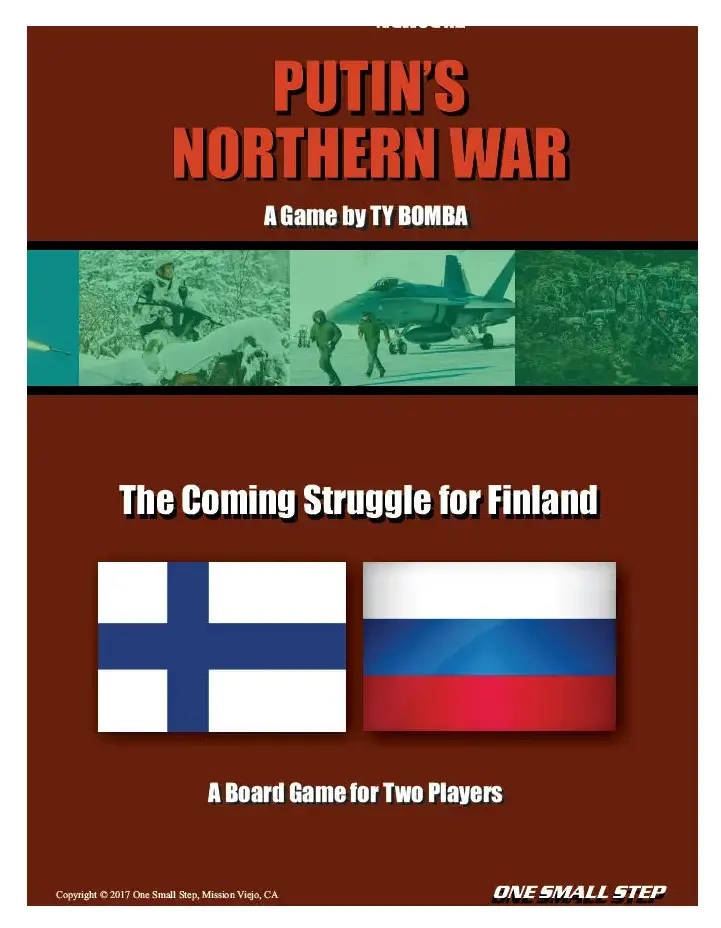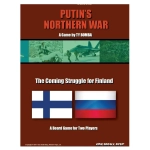The crisis being modeled here will certainly come into being if the drift of the two "neutral" Scandinavian nations toward NATO membership continues. That would most likely occur if a conservative government came to power in Sweden.
Part of that altered worldview in Stockholm would then likely also move that government to want to join the Western alliance. Since the Finns are already allied with Sweden (and Denmark), it's hard not to imagine such a shift wouldn't also pull Helsinki in the same direction.
All of which would be unacceptable to Putin.
His goal here would be to bring off a quick and victorious blitzkrieg-like campaign against Finland, while also seizing the low-hanging fruit of Sweden's Gotland Island. That would allow him to install a fully subservient government in Helsinki, turn the Baltic Sea into a Russian lake, and simultaneously recast Sweden into Finland's former role: a quiet and pliant neutral. This game can be played as a stand-alone, or it can be used as part of a new "Grand Campaign Scenario" for combined play with Putin Strikes.
This is a wargame in which solitaire play is possible, but is more usually played with two, whereby one (the "Russian player") commands the Kremlin's forces and the other (the "Allied player") commands the Finnish-Swedish alliance opposed to him.
It's designed to facilitate the examination of the strategic possibilities (along with their operational undertones) inherent in this potentially larger and more drastic situation.
Each turn of play equals half a week of real time.
Each hexagon on the map represents 20 miles (32.5 km) from side to opposite side.
The Finns and Swedes have their entire combined ground force in the Allied side's OB.
The Russians would be looking to wage and win this campaign as quickly as possible, but without logistically and administratively disrupting their entire ground force. They are given everything normally available in their Western Military District reinforced with all the new offensive-oriented units they've lately been creating. That includes most of their special operations branch, the new heavy divisions, and the ultra-elite Order of Suvorov & Kutuzov Heavy Sapper Brigade.
The system in this design is the Big And Dumb Armies Simulation System (BADASS). It's based around the idea large First World armies almost always begin major wars well trained and fully equipped. Unfortunately for those in their frontline units, both the training and equipment usually only make them ready for the previous war, not the one they're about to fight.
Beyond that, the initial period of such wars is characterized by only a partially abandoned peacetime psychology among the officers and enlisted. That is, no one as yet appreciates what it means operatively to be in an all-out war. All that comes together to give overall performance a high-risk, volatile and fragile quality: no one as yet knows what's actually possible or wise to try to accomplish.
Seemingly powerful units therefore easily become "disrupted"--especially as gauged in relation to similar units' performances later, after everyone's been thoroughly schooled in the art of war as it exists in the present.
The system therefore doesn't play in a way common to operational-level simulations. The whole thing has a Go like quality to it.
That commander will succeed best who--rather than reacting to or launching operations opportunistically one at a time--plans his campaign and then campaigns on that plan. Of course, it's also true no plan survives first contact with the enemy. So you must do so while leaving your scheme of operation at least some capacity for opportunism.
Strategy is not simple; it is complex.
Contents:
One 22x34" game map
One half-sheet of die-cut, mounted, full-color playing pieces
One book of rules
Dice
Game Box




